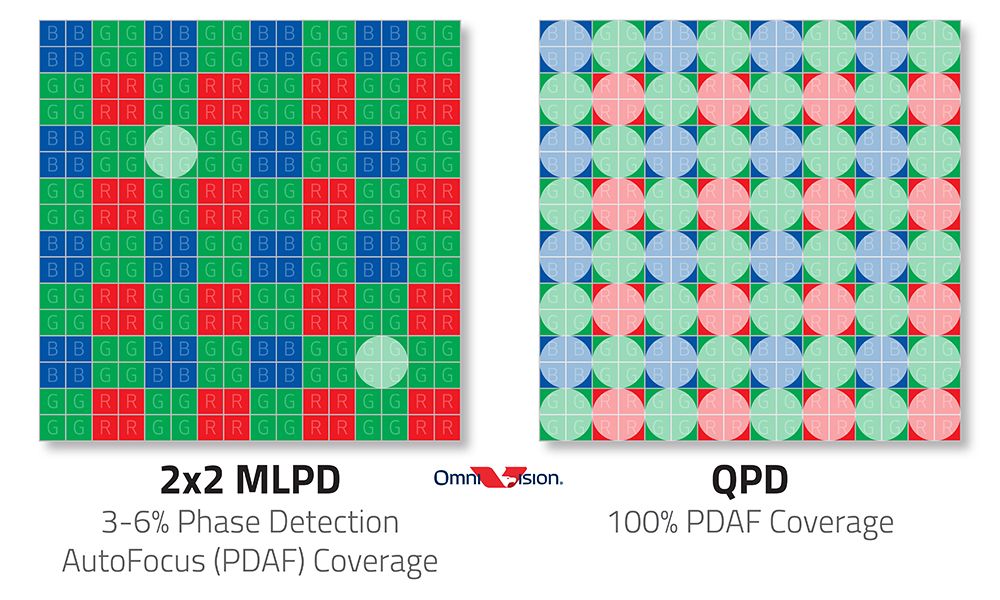The Chinese image sensor maker OmniVision on Tuesday expanded its portfolio with a release of a brand new mobile sensor in the form of OV50A. The OmniVision OV50A is designed for primary and ultra-wide angle cameras and claims to offer superior autofocus and low-light performance.
The OmniVision OV50A is a 50MP image sensor with a 1.0-micron pixel size and 1/1.5-inch sensor size, going head to head against Samsung’s 50MP ISOCELL GN1 sensor, which has a 1.2-micron pixel size and a 1/1.35 sensor size. The OV50A uses Quad phase-detection (QPD) technology, enabling 2x2 phase detection autofocus (PDAF) across the entire image sensor for 100% coverage. This is similar in concept to Sony’s 2 x 2 On-Chip Lens (OCL) technology and, in theory, better than Samsung’s Dual Pixel solution.
QPD enables 2x2 phase detection autofocus (PDAF) across the sensor’s entire image array, for 100% coverage. Unlike the microlens and half-shield PDAF technologies, which only capture 3-6% of the phase detection data
OmniVision claims QPD significantly improves autofocus performance in low-light conditions and provides enhanced distance calculation. The sensor is built on OmniVision’s PureCel Plus-S stacked die and integrates an on-chip, QPD color filter, and hardware remosaic. OmniVision also touts improved HDR performance through 2- and 3-exposure staggered timing and selective conversion gain.
In terms of video output, the sensor supports 8K video recording with QPD at 30fps and 4K at 60fps, along with slow-motion video capture at 1080p at 240fps and 720p at 480fps. The sensor uses the CPHY MIPI interface with a max throughput of up to 3.5Gbps.
The OV50A also supports pixel-binning and can output 12.5MP images and 4K footage with 2.0-micron pixel size with increased light sensitivity.
The OV50A will be sampled with customers in Q2 2021, with OmniVision positioning it as a premium choice for wide and ultra-wide cameras. It's unclear which smartphone OEMs will be the first in line to utilize the new sensor.


